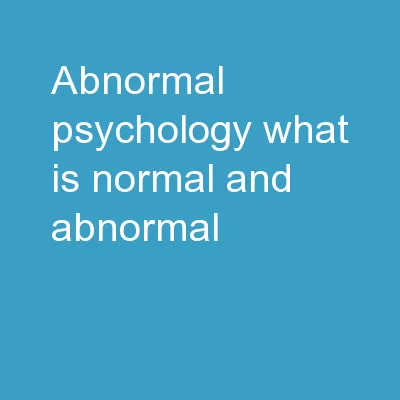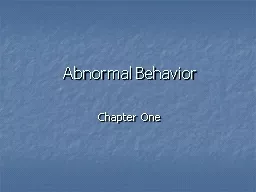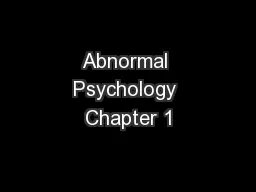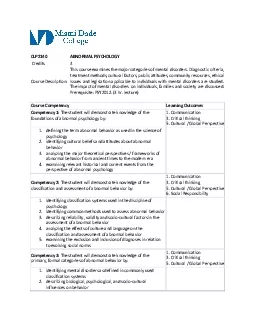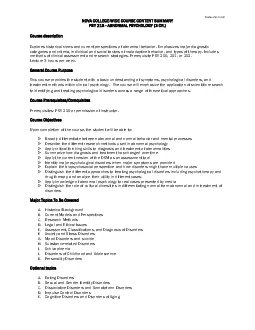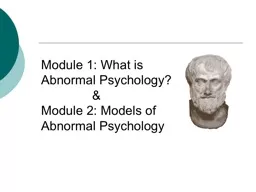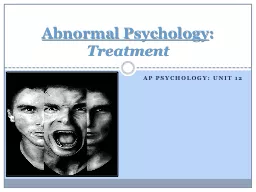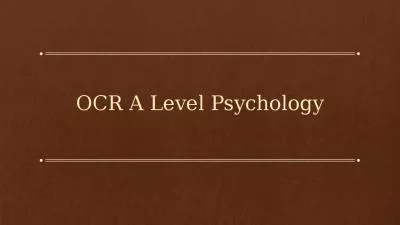PPT-Abnormal Psychology What is normal and abnormal?
Author : tawny-fly | Published Date : 2019-03-01
Objectives To define normal and abnormal To decide between methods of deciding normality To recognize the use of the bellshaped curve showing normal distribution
Presentation Embed Code
Download Presentation
Download Presentation The PPT/PDF document "Abnormal Psychology What is normal and a..." is the property of its rightful owner. Permission is granted to download and print the materials on this website for personal, non-commercial use only, and to display it on your personal computer provided you do not modify the materials and that you retain all copyright notices contained in the materials. By downloading content from our website, you accept the terms of this agreement.
Abnormal Psychology What is normal and abnormal?: Transcript
Download Rules Of Document
"Abnormal Psychology What is normal and abnormal?"The content belongs to its owner. You may download and print it for personal use, without modification, and keep all copyright notices. By downloading, you agree to these terms.
Related Documents

